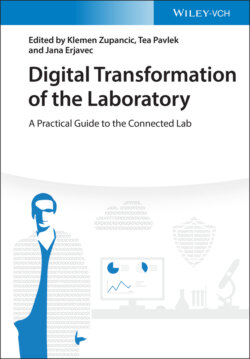Читать книгу Digital Transformation of the Laboratory - Группа авторов - Страница 21
1.2.5 New Technology
ОглавлениеIn any future‐looking article we can only make some best guesses as to the new technologies and science that could be important during the next 5–10 years. In this section we make some suggestions as to what new technologies we feel will impact the LotF, and what new science will be happening in those future labs. In the first part of this section, we focus on new technologies. In the second part, we suggest some scientific areas which we feel will grow in importance and hence might drive the evolution of the LotF and the technology that is adopted in that new lab environment.
New technologies will undoubtedly play a major role in driving the development of the critical components within the LotF, but their introduction and usage need to be appropriate to the type of lab being used. The role of the new technologies must be aligned to the future challenges and needs of the lab environment. These needs include, more specifically:
Flexibility and agility of the experiment cycles, balancing between prediction (in silico) and physical (in vitro) experiments
Improved data collection and experiment capture (e.g. “data born FAIR”)
Reproducibility of the experiment processes
Enhancements to the scientists' UX and capabilities in the lab.
To emphasize these aspects, we focus on three broad areas in this section:
1 Lab automation integration and interoperability
2 Quantum computing and the LotF
3 Impact of AI and machine learning (ML).
